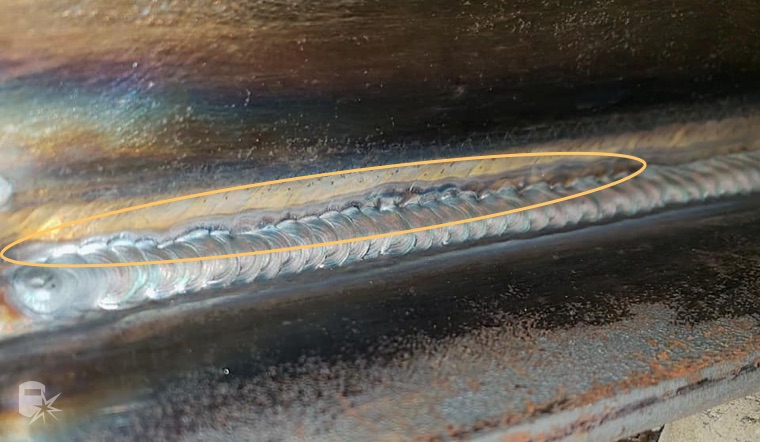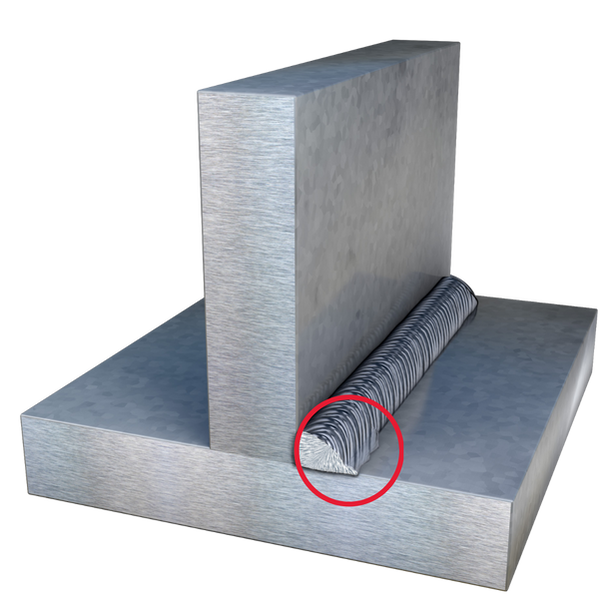Preventing Weld Undercut Made Easy: Key Techniques Unveiled
Preventing Weld Undercut Made Easy: Key Techniques Unveiled
Blog Article
Understanding the Causes and Solutions for Undercut Welding in Metal Construction Procedures
In the world of steel manufacture processes, the incident of undercut welding postures a substantial challenge that demands a detailed understanding of its reasons and practical remedies. The complex interplay of different factors throughout welding procedures can bring about this undesirable sensation, influencing the architectural honesty and total top quality of the bonded joints - Preventing weld undercut. By exploring the source of undercut welding and checking out efficient remedial steps, producers can elevate the standard of their handiwork and make certain the manufacturing of perfect metal components
Common Sources Of Undercut Welding
Frequently ignored in steel manufacture, undercut welding takes place because of different factors that require careful interest and experience to be effectively alleviated. One usual source of undercut welding is extreme heat input. When the warmth input is as well high, it can lead to the melting and succeeding erosion of the base product along the edges of the weld joint, creating a groove or undercut. In addition, incorrect welding strategies, such as utilizing the wrong welding angle or take a trip speed, can additionally contribute to damage development. Insufficient protecting gas protection is one more crucial element that can result in undercutting. Inadequate gas insurance coverage stops working to secure the weld pool properly, bring about oxidation and undercut problems. The option of welding criteria, such as voltage, current, and cable feed rate, plays a considerable role in the occurrence of undercut welding. Comprehending these usual causes is critical for executing safety nets and making certain high-quality welds in steel manufacture processes.
Impact of Incorrect Welding Parameters
Incorrect welding specifications can substantially endanger the honesty and top quality of bonded joints in steel construction procedures. The effect of inaccurate welding specifications materializes in different ways, causing architectural weaknesses and problems in the welded components. One crucial aspect affected by improper welding specifications is the infiltration depth of the weld. Insufficient heat input as a result of reduced welding currents or exceedingly high travel speeds can cause poor combination between the base metals, leading to insufficient joint infiltration and compromised bonds. Conversely, excessive warmth input brought on by high welding currents or sluggish travel rates can cause excessive and burn-through support, producing a brittle and unpredictable weld framework. Additionally, wrong specifications such as improper voltage setups or inaccurate electrode angles can contribute to irregular weld bead profiles, absence of fusion, and raised possibilities of defects like damaging. Meticulous attention to welding specifications is extremely important to guarantee the manufacturing of premium welds with the wanted mechanical residential properties and architectural stability.
Result of Improper Torch Angle
Improper torch angle in welding operations can substantially influence the top quality and integrity of the final weld joints in metal construction processes. The torch angle plays a critical role in identifying the warm input and distribution during welding. When the torch angle is wrong, issues such as undercutting can arise. Undercutting is an usual welding defect where a groove develops along the weld toe, weakening the joint and jeopardizing its structural stability.
A torch angle that is as well steep can result in insufficient penetration, incomplete blend, and raised spatter. On the various other hand, a lantern angle that is as well shallow can result in too much penetration, burn-through, and distortion of the base material. Preventing weld undercut. Appropriate lantern angle is vital for ensuring constant weld quality, strength, and look
To protect against damaging and other defects triggered by incorrect torch angles, welders have to be educated to maintain the proper lantern angle throughout the welding process. Normal tracking and adjustment of lantern angles during welding can help attain sound welds with minimal issues.
Function of Inadequate Welding Techniques

An additional facet of inadequate welding techniques is improper weld preparation. Inadequate cleansing of the base steels, wrong joint layout, or insufficient edge prep work can all add to undercut welding. Inadequate shielding gas protection or making use of the wrong type of gas can result in incomplete blend and the development of undercut flaws.
To attend to the function of inadequate welding techniques in steel fabrication procedures, it is essential to provide thorough training for welders. Correct education on welding parameters, joint prep work, and protecting gas selection can aid protect against undercut welding and make sure top notch welds in steel manufacture jobs.
Efficient Solutions for Undercut Welding
Dealing with undercut welding in metal manufacture requires implementing efficient services to boost weld quality and structural integrity. One of the key solutions to deal with undercut is to readjust welding specifications such as voltage, present, and travel speed to ensure appropriate warm input and combination. By fine-tuning these settings, welders can avoid extreme melting of the base steel and filler product, reducing the probability of undercut formation.
In addition, proper joint prep work is crucial in protecting against undercut. Making sure tidy base metal surfaces devoid of pollutants and making use of the suitable bevel angle can aid promote much better weld infiltration and reduce the threat of undercut - Preventing weld undercut. Employing appropriate welding strategies, such as weaving or oscillating the torch, can additionally aid in distributing warmth evenly and filling up the weld joint adequately, reducing the possibility of undercut issues
Moreover, picking the appropriate welding consumables, including electrodes and filler steels, is essential in reducing undercut. Utilizing products with ideal chemical compositions and mechanical buildings can contribute to achieving sound welds with very little undercut. Routine examination and top quality control measures ought to also be carried out to identify and deal with undercut issues quickly, making certain the total honesty of made steel elements.

Conclusion
In conclusion, understanding the anonymous causes and options for undercut welding in steel construction processes is vital for accomplishing high-grade welds. By attending to typical causes such as incorrect welding parameters, improper lantern angle, and poor welding methods, welders can stop undercutting and ensure solid, sturdy welds. It is vital to pay focus to these factors and apply reliable options to improve the overall welding procedure and final product top quality.

Report this page